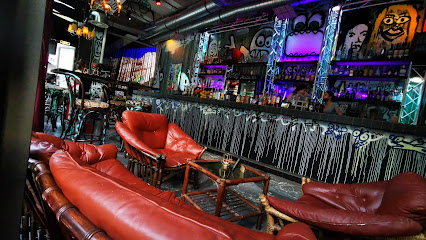
Kastell Deutz: Echoes of Roman Cologne
Explore the remnants of a Roman fort in Cologne-Deutz, offering a glimpse into the city's ancient past and strategic importance on the Rhine River, part of the UNESCO World Heritage Roman Limes.
Kastell Deutz, or Divitia as it was known in antiquity, offers a fascinating glimpse into Cologne's Roman past. Built in the early 4th century AD under Emperor Constantine, this fortified military camp served as a crucial bridgehead across the Rhine, securing the border and projecting Roman power. Today, remnants of the fort's foundations, particularly the impressive east gate, are visible, providing a tangible link to the city's ancient origins. Explore the visible remains, including the semi-circular 'ham cauldron' integrated into the Rhine boulevard, and imagine life in this strategic outpost of the Roman Empire. Located on the Rhine's right bank, Kastell Deutz is easily accessible and provides a compelling historical counterpoint to Cologne's iconic cathedral and other attractions on the opposite bank. The site is a testament to Cologne's strategic importance throughout history and its role as a vital center of Roman civilization in the region. A visit here offers a unique perspective on the city's rich and layered past.
A brief summary to Kastell Deutz - Osttor
- Am Deutzer Kastell, Cologne, Innenstadt, 50679, DE
- Visit website
Local tips
- Combine your visit with a walk along the Rhine Boulevard for scenic views of Cologne's skyline and the Hohenzollern Bridge.
- Visit the Römisch-Germanisches Museum on the other side of the Rhine to see artifacts from the fort and learn more about Roman Cologne.
- Check out the Deutzer Freiheit, a nearby street with shops and restaurants, to experience the local atmosphere.
Getting There
-
Public Transport
From Cologne's city center, take tram lines 1, 7, or 9 to the 'Deutzer Freiheit' stop. From there, it's a short walk to Kastell Deutz. These lines are easily accessible from major transportation hubs like Köln Hauptbahnhof (Cologne Central Station). A single ticket (Kurzstrecke) costs approximately €2.20.
-
Walking
If you are already in the Deutz area, Kastell Deutz is easily accessible by foot. From the Köln Messe/Deutz train station, walk southeast along Deutzer Freiheit. The site is located near the Rhine River, a short distance from the Deutzer Freiheit U-Bahn station.
-
Taxi/Ride-Share
A taxi or ride-share from Cologne's city center to Kastell Deutz will typically cost between €10-€15, depending on traffic. The journey usually takes around 5-10 minutes. Specify 'Am Deutzer Kastell' as your destination.
Discover more about Kastell Deutz - Osttor
Iconic landmarks you can’t miss
Kastell Deutz - Osttor
0.0 km
Explore the remnants of a Roman fort in Cologne-Deutz, offering a glimpse into the city's ancient past and strategic importance on the Rhine River, part of the UNESCO World Heritage Roman Limes.
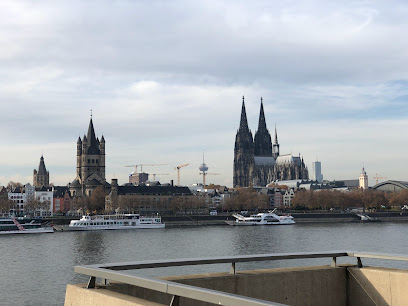
Deutz Abbey
0.1 km
Discover Deutz Abbey in Cologne: A historic Benedictine monastery offering a serene escape, Romanesque architecture, and a glimpse into the city's rich monastic past and cultural heritage.

Römisches Kastell Deutz
0.1 km
Explore the remnants of Cologne's Roman fort, Divitia, a strategic outpost on the Rhine, offering a glimpse into the city's ancient past and the Roman Empire's influence.
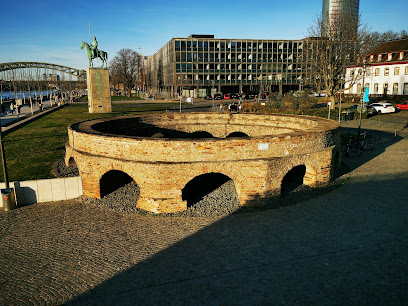
Brunnen
0.1 km
Explore Deutzer Freiheit in Cologne: A vibrant street blending history, shopping, and dining on the Rhine's right bank, offering easy access to top attractions and stunning city views.
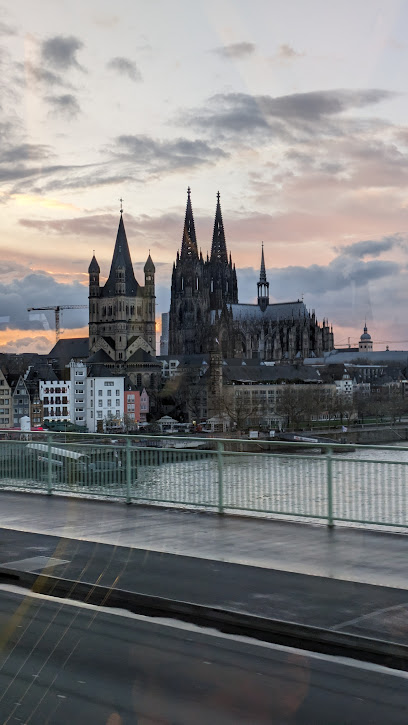
Cologne View
0.3 km
Experience Cologne from above at the Cologne Triangle Panorama, offering breathtaking views of the iconic Cologne Cathedral, the Rhine River, and the city's historic skyline.
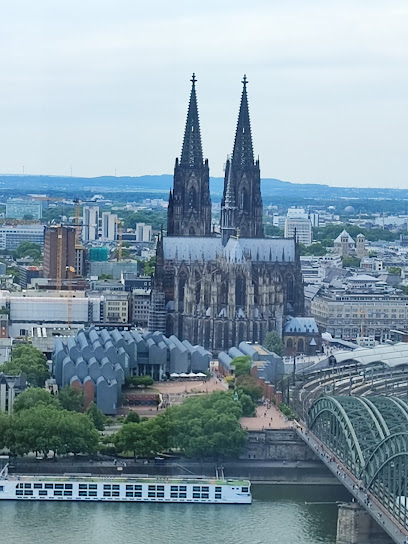
Nikolaus August Otto und Eugen Langen Memorial
0.4 km
Honoring the fathers of the internal combustion engine, this Cologne memorial marks the spot where Otto and Langen sparked a global revolution in transportation and industry.
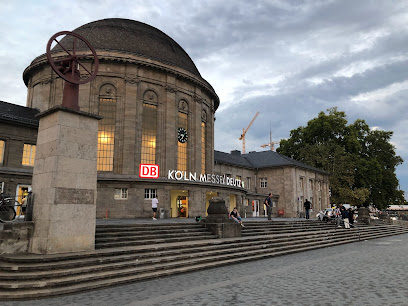
Experience Cologne
0.6 km
Explore Cologne's rich history, stunning architecture, and vibrant culture through expertly guided tours with Experience Cologne, a premier tour agency.
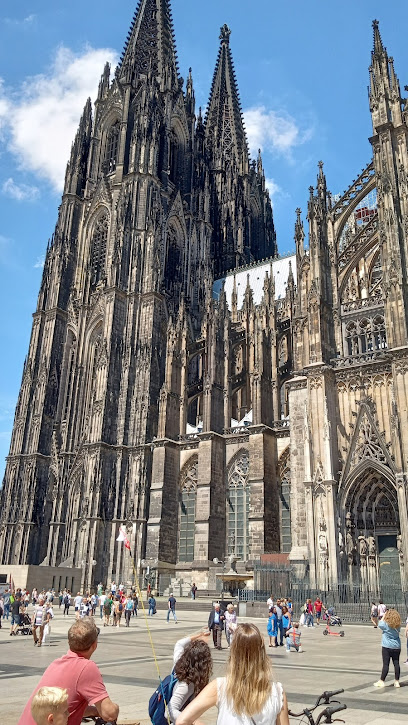
Paolozzibrunnen – Eduardo Paolozzi (1986)
0.6 km
Discover the Paolozzi Fountain in Cologne: a captivating blend of modern art, historical remnants, and playful interaction in the heart of the scenic Rheingarten park, a short walk from Cologne Central Station.
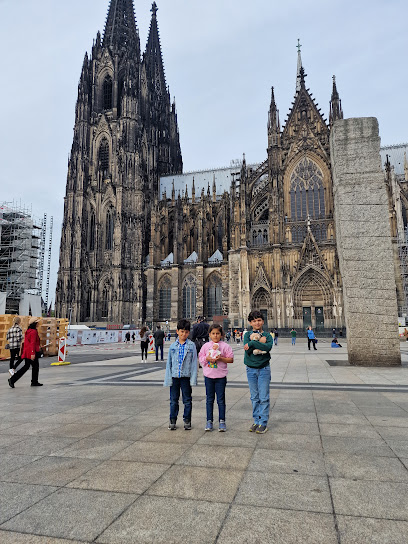
Cologne
0.7 km
Discover Cologne: A vibrant city where ancient history meets modern culture, offering iconic landmarks, world-class museums, and a lively atmosphere on the Rhine.
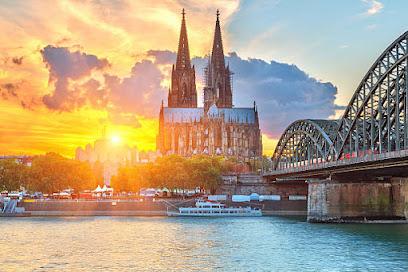
Historisches Rathaus der Stadt Köln
0.8 km
Discover Cologne's Historisches Rathaus, a magnificent blend of Gothic and Renaissance architecture, and Germany's oldest city hall, steeped in history and civic pride, in the heart of the vibrant Old Town.
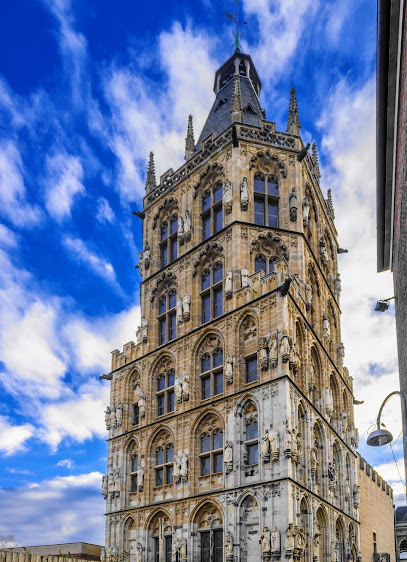
Heumarkt 43
0.8 km
Experience the vibrant heart of Cologne at Heumarkt, a historic square brimming with culture, cuisine, and Kölsch, offering a perfect blend of old-world charm and modern excitement.
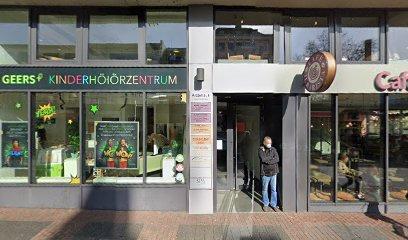
Heinrich-Böll-Platz
0.8 km
Experience Cologne's vibrant cultural heart at Heinrich-Böll-Platz, a dynamic square connecting the iconic Cathedral, Museum Ludwig, and Philharmonie, offering art, music, and stunning views.
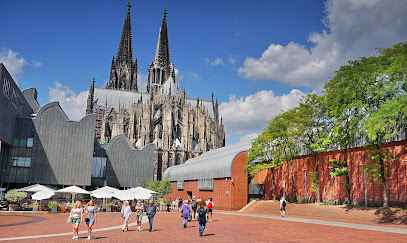
Overstolzenhaus
0.8 km
Discover the Overstolzenhaus in Cologne, a magnificent example of Romanesque architecture and a window into the lives of medieval merchants, nestled in the heart of the city's historic district.
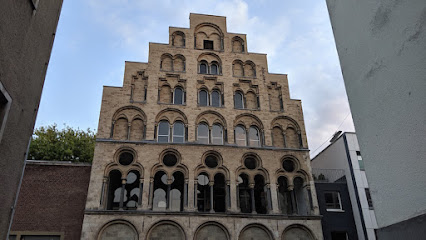
Römisches Praetorium
0.8 km
Discover Cologne's rich Roman history at the Römisches Praetorium, an archaeological gem in the city's heart showcasing ancient architectural marvels.
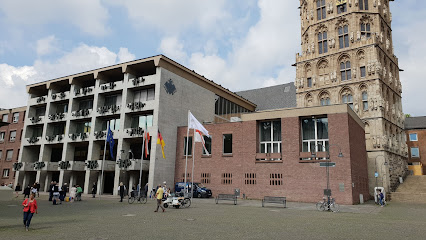
Tauzieher
0.8 km
Discover the Tauzieher, a historic sculpture in Cologne's Rheinauhafen, embodying the city's maritime past and working-class heritage, near the Chocolate Museum and Old Town.
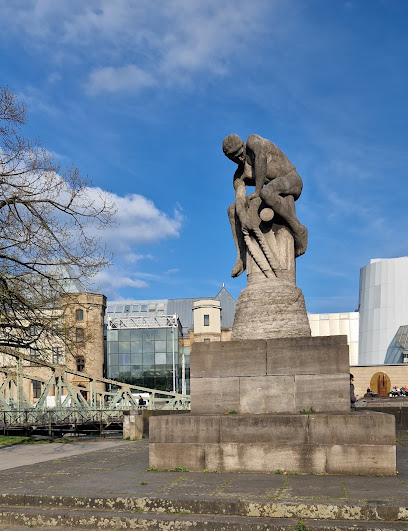
Unmissable attractions to see
Rheinpromenade Köln-Deutz
0.2 km
Experience the vibrant atmosphere and breathtaking views of Cologne's skyline along the scenic Rheinpromenade in Köln-Deutz.
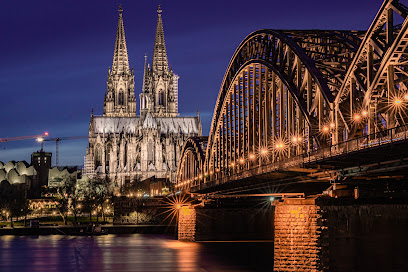
Deutz Twins, Brunnenskulptur
0.3 km
Explore the Deutz Twins in Cologne – a stunning water sculpture that beautifully intertwines art and nature in a vibrant urban setting.
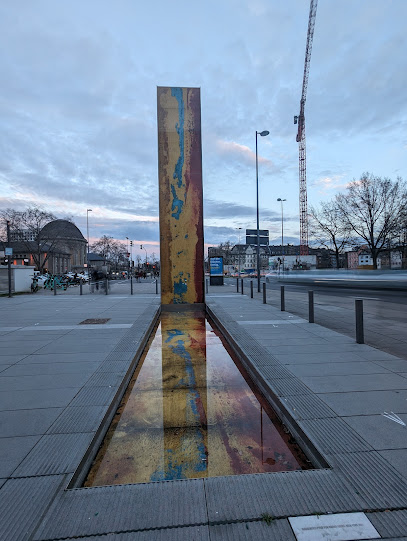
Cologne Triangle
0.3 km
Experience breathtaking panoramic views of Cologne’s skyline and the Rhine River from the iconic Cologne Triangle observation deck.
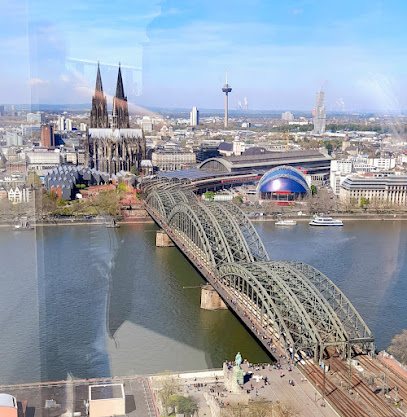
Equestrian Statue of Kaiser Wilhelm I
0.4 km
Discover the stunning Equestrian Statue of Kaiser Wilhelm I in Cologne, a magnificent cultural landmark celebrating German history along the scenic Rhine River.
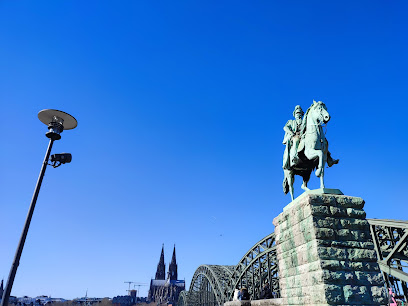
Deutzer Brauhaus
0.4 km
Experience authentic German cuisine and craft beer in the vibrant atmosphere of Deutzer Brauhaus, a must-visit brewpub in Cologne.
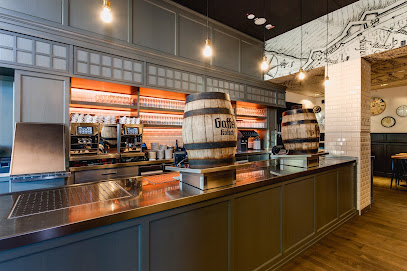
Deutzer Brücke
0.4 km
Explore the stunning Deutzer Brücke in Cologne, where scenic views meet rich history, making it a must-visit for every traveler.
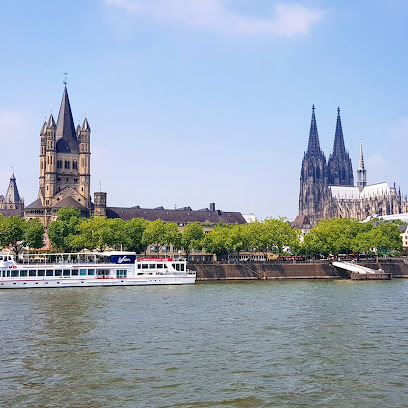
Hohenzollern Bridge
0.5 km
Explore the iconic Hohenzollern Bridge in Cologne, where stunning views, rich history, and romantic traditions come together in a breathtaking experience.
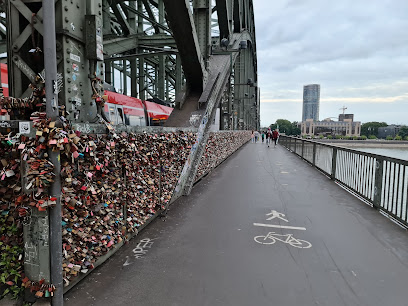
Der Pegelturm
0.5 km
Discover the historical significance and scenic beauty of Der Pegelturm, an iconic water level tower on the banks of the Rhine in Cologne.
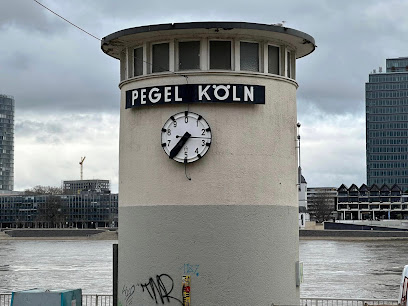
Rheinufer
0.5 km
Experience the breathtaking views and vibrant atmosphere at Rheinufer, Cologne's scenic riverside promenade, perfect for relaxation and exploration.
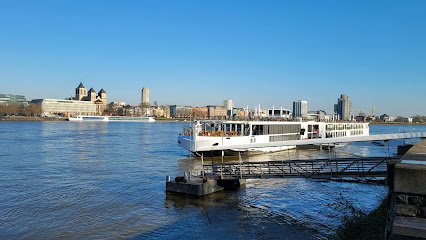
Frankenwerft
0.6 km
Experience the picturesque charm of Frankenwerft in Cologne, where stunning riverside views meet rich history and vibrant local culture.
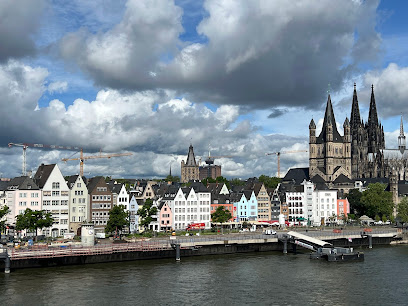
Old Town Cologne
0.6 km
Explore the enchanting Old Town Cologne, where history, culture, and culinary delights converge in a vibrant riverside setting.

Fischweiber-Brunnen (Rainer Walk, 1986)
0.6 km
Explore Cologne's rich heritage at the Fischweiber-Brunnen, a stunning fountain honoring the city's historic fish trade and vibrant local life.
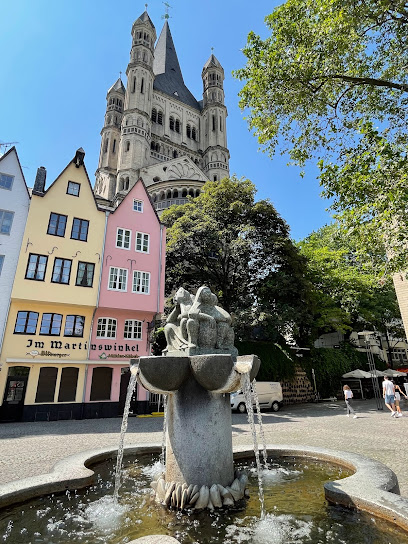
Buttermarkt
0.6 km
Experience the vibrant atmosphere and rich history of Buttermarkt, a must-visit square in the heart of Cologne perfect for relaxation and exploration.
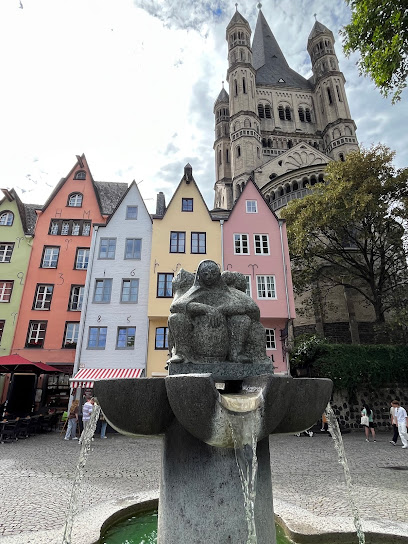
Papa Joe's Jazz Bar
0.6 km
Discover the rhythm of Cologne at Papa Joe's Jazz Bar, where live jazz, cozy ambiance, and vibrant nightlife await every visitor.
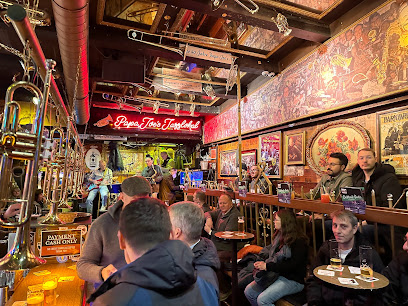
KD Deutsche Rheinschiffahrt GmbH
0.6 km
Explore the beauty of the Rhine River with KD Deutsche Rheinschiffahrt, offering unforgettable boat tours in the heart of Cologne.
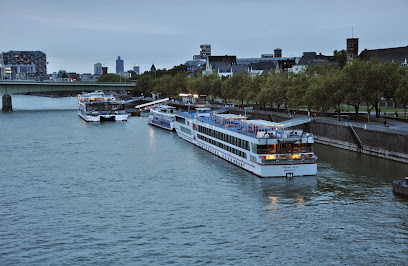
Essential places to dine
bonaˊme Köln-Deutz
0.1 km
Savor authentic Middle Eastern flavors at bonaˊme Köln-Deutz - where culinary traditions meet modern dining.
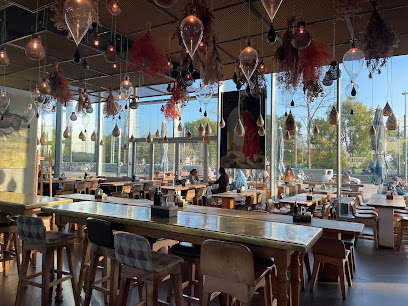
Kaiser Konstantin - Kölsches Brauhaus
0.1 km
Discover authentic Kölsch beer and traditional German cuisine at Kaiser Konstantin - Kölsches Brauhaus along the beautiful Rhine River in Cologne.

Minsu Restaurant Köln
0.1 km
Discover the unique fusion flavors at Minsu Restaurant Köln - where culinary artistry meets cultural diversity in every bite.
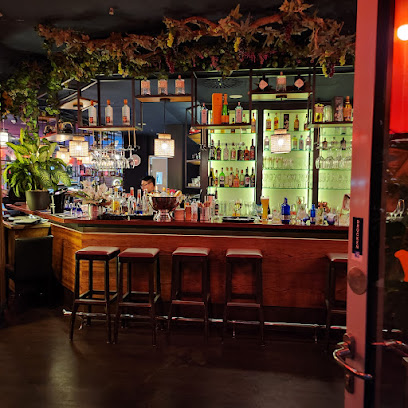
Gaststätte Lommerzheim
0.2 km
Experience authentic German cuisine and craft beers at Gaststätte Lommerzheim - a must-visit brewery pub in Cologne.
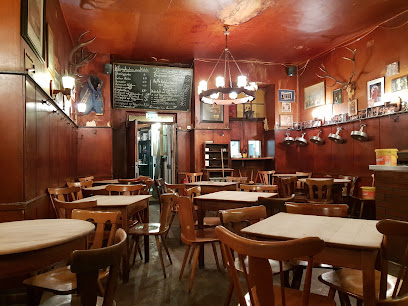
Sticky Fingers Restaurant & Terrasse
0.3 km
Experience delicious American cuisine at Sticky Fingers Restaurant & Terrasse in Cologne – perfect for families and friends overlooking the Rhine River.
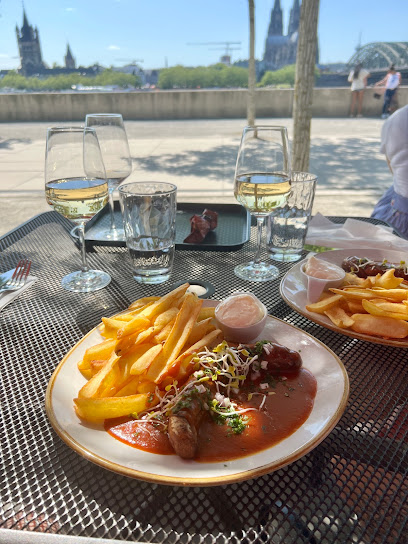
Glashaus Restaurant
0.3 km
Experience exquisite dining at Glashaus Restaurant, where contemporary design meets exceptional cuisine along the scenic Rhine River in Cologne.
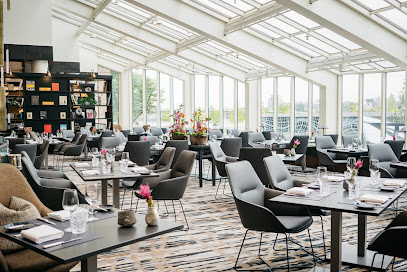
Mongo's Restaurant Köln - Deutz
0.3 km
Experience authentic Mongolian barbecue and Asian flavors at Mongo's Restaurant Köln - Deutz; perfect for food lovers seeking diverse cuisine.
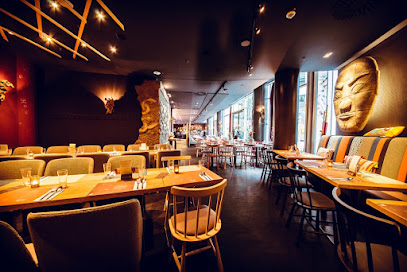
Grissini Restaurant & Terrasse
0.3 km
Experience the taste of Italy with stunning river views at Grissini Restaurant & Terrasse in Cologne.
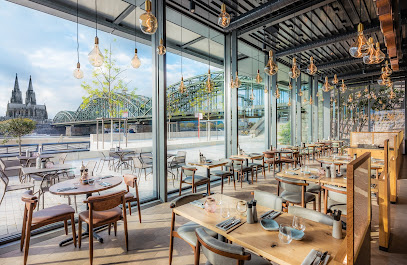
Haus Zeyen
0.3 km
Experience authentic German flavors at Haus Zeyen, where culinary tradition meets modern comfort in the heart of Cologne.
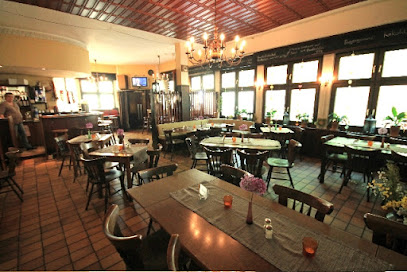
Haxenhaus
0.6 km
Experience authentic German flavors at Haxenhaus in Cologne – where tradition meets taste by the Rhine River.
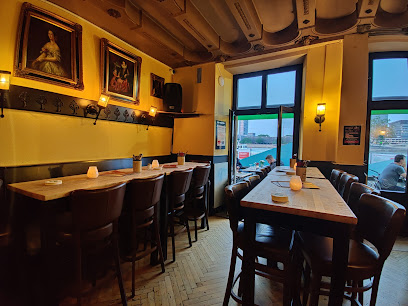
Restaurant Mama Leone
0.6 km
Savor authentic Italian flavors at Restaurant Mama Leone in Cologne – where every meal is a celebration of taste and tradition.
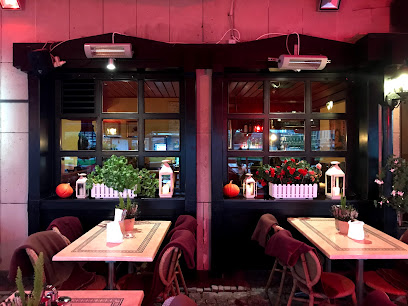
Brauhaus Sünner im Walfisch
0.6 km
Experience Cologne's brewing tradition at Brauhaus Sünner im Walfisch – where authentic flavors meet local charm.
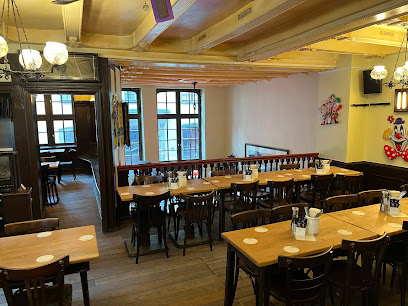
Restaurant Bellevue
0.6 km
Experience exquisite dining at Restaurant Bellevue in Cologne – where culinary artistry meets stunning river views.
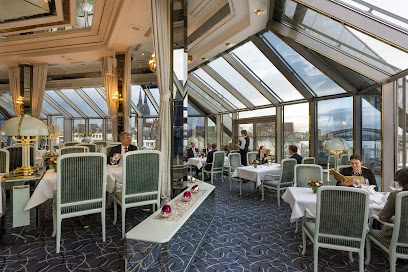
RheinZeit
0.6 km
Experience authentic German cuisine at RheinZeit in Cologne, where tradition meets modern dining in a vibrant atmosphere.
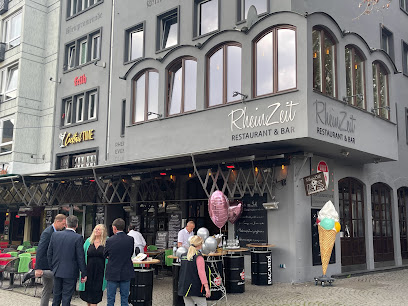
Keule
0.7 km
Experience authentic German flavors at Keule in Cologne - where tradition meets modern culinary artistry.
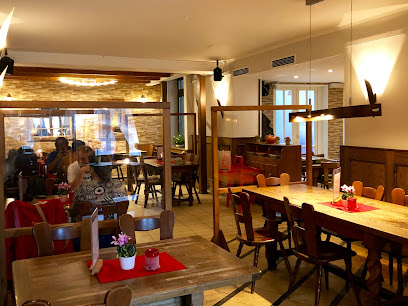
Markets, malls and hidden boutiques
Grow Shop Cologne plant breeding
0.2 km
Explore a lush paradise at Grow Shop Cologne, your go-to destination for plants, gardening supplies, and expert advice in the heart of the city.

ReqArda Internet Cafe
0.2 km
Explore Cologne effortlessly at ReqArda Internet Cafe – your cozy digital hub for high-speed internet and refreshing drinks.
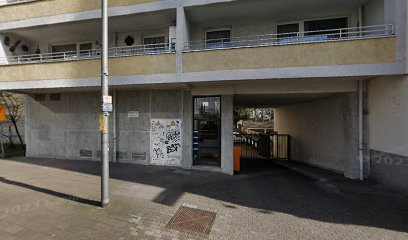
KODi Köln Deutz
0.3 km
Explore KODi Köln Deutz, your go-to home goods store in Cologne for stylish, affordable essentials that make your space uniquely yours.
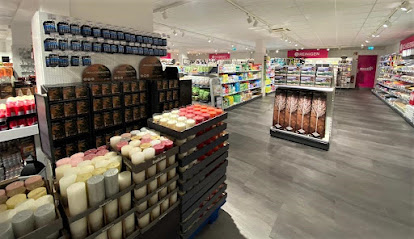
Kölsche Geschenkartikel - Elke Kruse
0.3 km
Discover the charm of Cologne at Kölsche Geschenkartikel, where unique souvenirs and local gifts await every traveler.
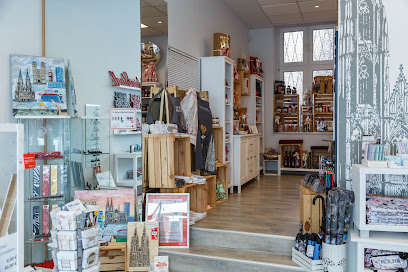
dm-drogerie markt
0.3 km
Explore dm-drogerie markt in Cologne for a diverse selection of cosmetics, groceries, and personal care products at great prices.

Eckert
0.4 km
Explore Eckert, Cologne's vibrant hypermarket offering everything from fresh bakery items to books, perfect for tourists seeking convenience and local flavor.
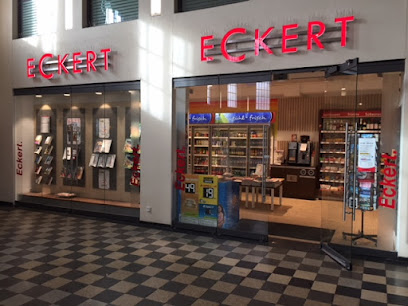
EuroShop
0.4 km
EuroShop: Your one-stop destination for unique gifts, home goods, and stationery in the heart of Cologne.
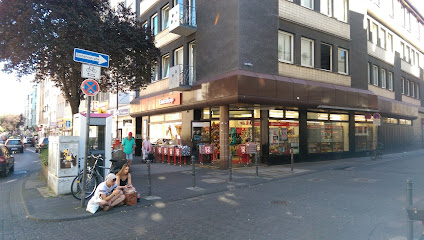
Einkaufsbahnhof Köln Messe-Deutz
0.4 km
Discover a vibrant shopping experience at Einkaufsbahnhof Köln Messe/Deutz, where fashion meets food in the heart of Cologne.
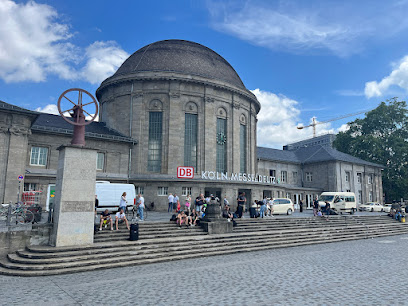
Roll-In
0.5 km
Explore Roll-In in Cologne for stylish clothing and accessories that embody contemporary fashion trends and elevate your wardrobe effortlessly.
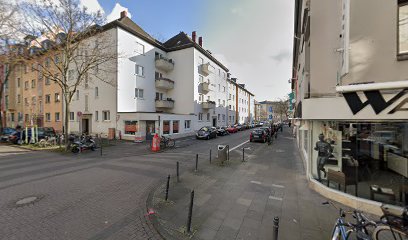
Casado Store
0.9 km
Discover the heart of Cologne's fashion at Casado Store, where style meets elegance and every piece is a statement.
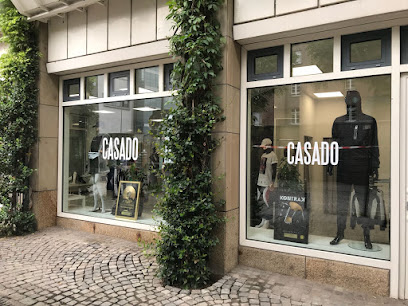
Früh Shoppen
0.9 km
Explore Früh Shoppen in Cologne for a delightful shopping experience filled with local treasures and unique finds.

Close Up GmbH
1.0 km
Explore Close Up GmbH: Cologne's premier gift shop for unique posters and artistic treasures in the heart of the city.
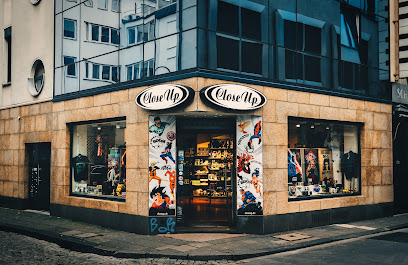
Domkloster 4 GmbH
1.0 km
Explore the heart of Cologne at Domkloster 4 GmbH, your go-to gift shop for unique souvenirs and local crafts that embody the city's spirit.
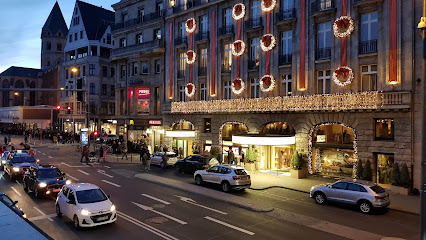
Pylones
1.0 km
Explore Pylones in Cologne for unique gifts and home goods, filled with creativity and playful designs to brighten your day.
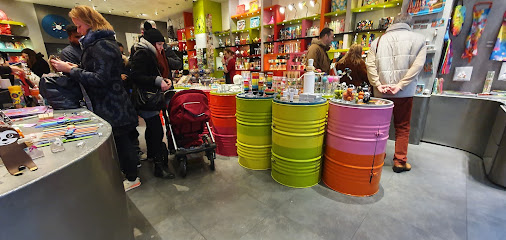
Elbenwald
1.0 km
Explore the enchanting Elbenwald gift shop in Cologne, where fantasy meets shopping with clothing, toys, and unique gifts for all ages.
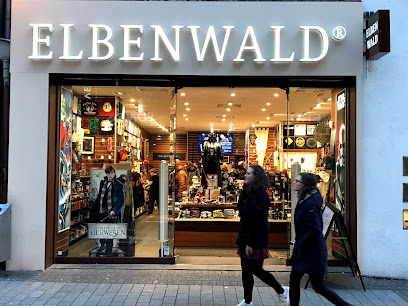
Essential bars & hidden hideouts
Legends Bar & Terrasse
0.3 km
Experience the ultimate cocktail bar in Cologne with stunning Rhine views, sophisticated atmosphere, and expertly crafted drinks at Legends Bar & Terrasse.
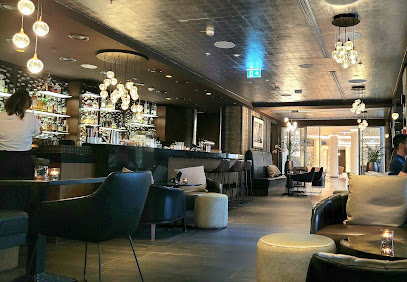
CAFE ESPECIAL Köln
0.4 km
Experience authentic Mexican flavors at Café Especial in Cologne, where vibrant dishes and a lively atmosphere create unforgettable dining moments.
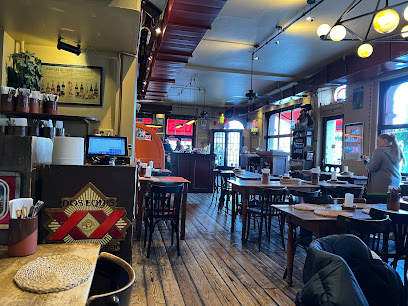
Constantin Pub
0.4 km
Discover the vibrant atmosphere and local charm of Constantin Pub, a must-visit destination for drinks and socializing in Cologne.
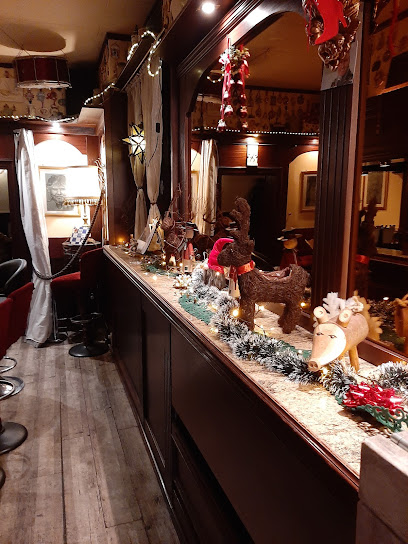
BON-Brauhaus ohne Namen
0.4 km
Experience the heart of Cologne's craft beer culture at BON-Brauhaus ohne Namen, a brewpub offering unique brews and delicious bites in a cozy setting.
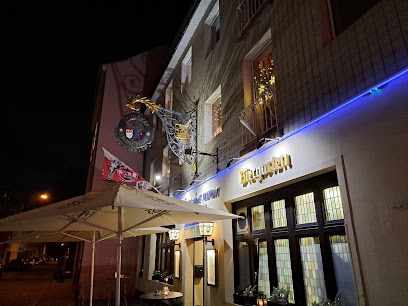
Latino Cubana
0.5 km
Discover the authentic tastes of Cuba at Latino Cubana, Cologne's premier Cuban restaurant and cocktail bar, where every bite is a celebration of flavor.
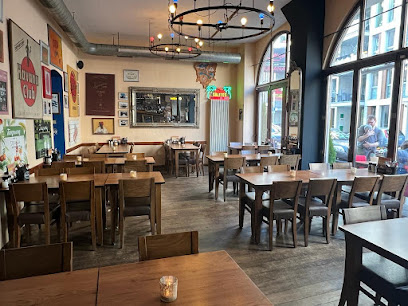
Joe Champs American Sportsbar & Restaurant
0.5 km
Indulge in American cuisine and sports excitement at Joe Champs American Sportsbar & Restaurant in Cologne.
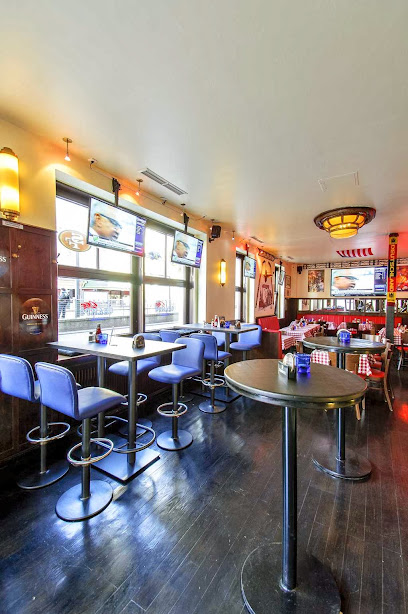
Sonderbar - Köln
0.6 km
Experience the best local brews and a vibrant atmosphere at Sonderbar, a must-visit bar in the heart of Cologne.
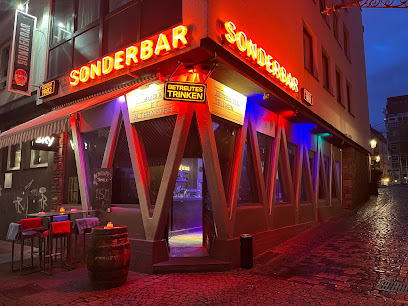
other side - bar'n'kitchen
0.6 km
Experience the best of Australian cuisine and local drinks at other side - bar'n'kitchen in Cologne's lively Innenstadt.
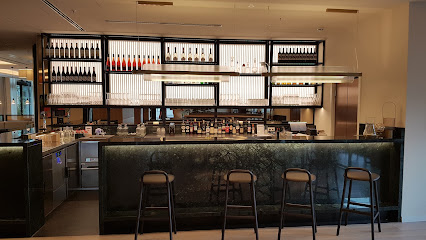
Piano Bar
0.6 km
Discover the enchanting Piano Bar in Cologne, where signature cocktails, live music, and a chic atmosphere create a perfect nightlife experience.
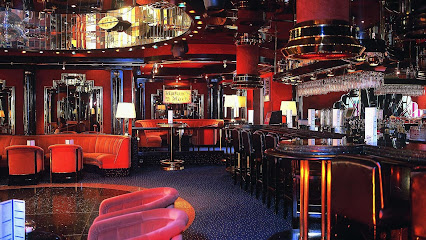
Papa Joe's Biersalon
0.7 km
Experience the vibrant pub culture of Cologne at Papa Joe's Biersalon, where great beer and hearty meals await in a lively atmosphere.
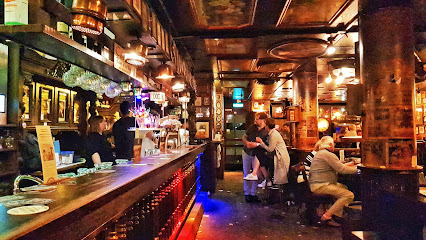
The Corkonian Irish pub
0.8 km
Experience the heart of Ireland at The Corkonian Irish Pub in Cologne, where traditional food, drinks, and live music create unforgettable memories.
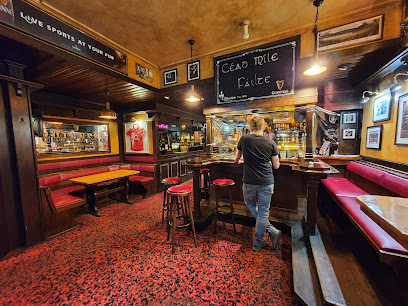
The Copper Pot - Köln
0.8 km
Experience Irish hospitality at The Copper Pot in Cologne, where lively ambiance, delicious cocktails, and live music await every visitor.
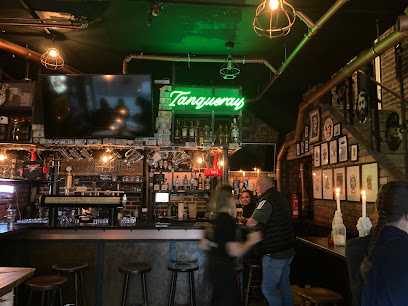
Barney Vallely's
0.8 km
Discover the essence of Ireland at Barney Vallely's, a lively pub in Cologne with authentic food, drinks, and vibrant entertainment.
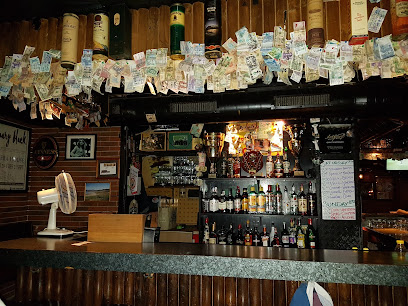
Bierbaum
0.8 km
Discover the lively Bierbaum bar in Cologne, where great drinks and a welcoming atmosphere blend seamlessly for an unforgettable night out.
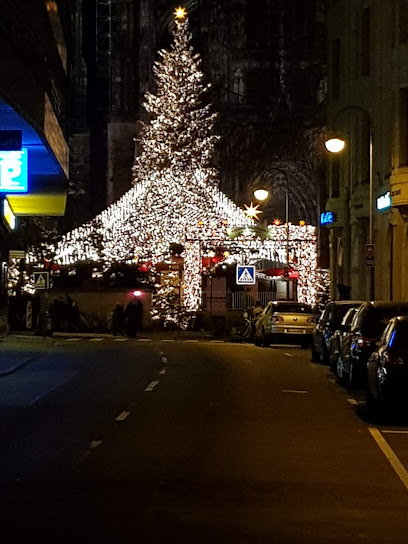
die kunstbar
0.9 km
Discover Die Kunstbar in Cologne: A vibrant bar blending art, music, and delicious drinks in the heart of the city’s nightlife.
